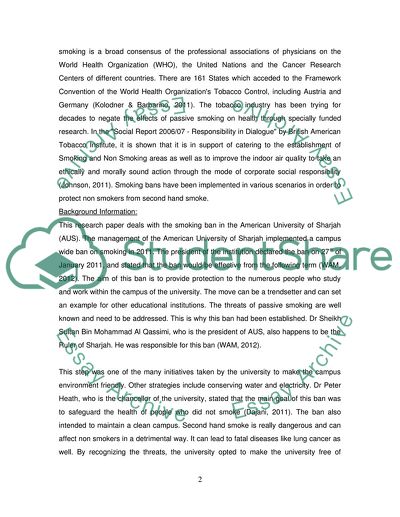Cite this document
(“The Effectiveness of Smoking Ban at the American University of Sharjah Research Paper - 1”, n.d.)
Retrieved from https://studentshare.org/social-science/1622496-how-effective-is-the-smoke-free-policy-at-the-american-university-of-sharjah
Retrieved from https://studentshare.org/social-science/1622496-how-effective-is-the-smoke-free-policy-at-the-american-university-of-sharjah
(The Effectiveness of Smoking Ban at the American University of Sharjah Research Paper - 1)
https://studentshare.org/social-science/1622496-how-effective-is-the-smoke-free-policy-at-the-american-university-of-sharjah.
https://studentshare.org/social-science/1622496-how-effective-is-the-smoke-free-policy-at-the-american-university-of-sharjah.
“The Effectiveness of Smoking Ban at the American University of Sharjah Research Paper - 1”, n.d. https://studentshare.org/social-science/1622496-how-effective-is-the-smoke-free-policy-at-the-american-university-of-sharjah.


